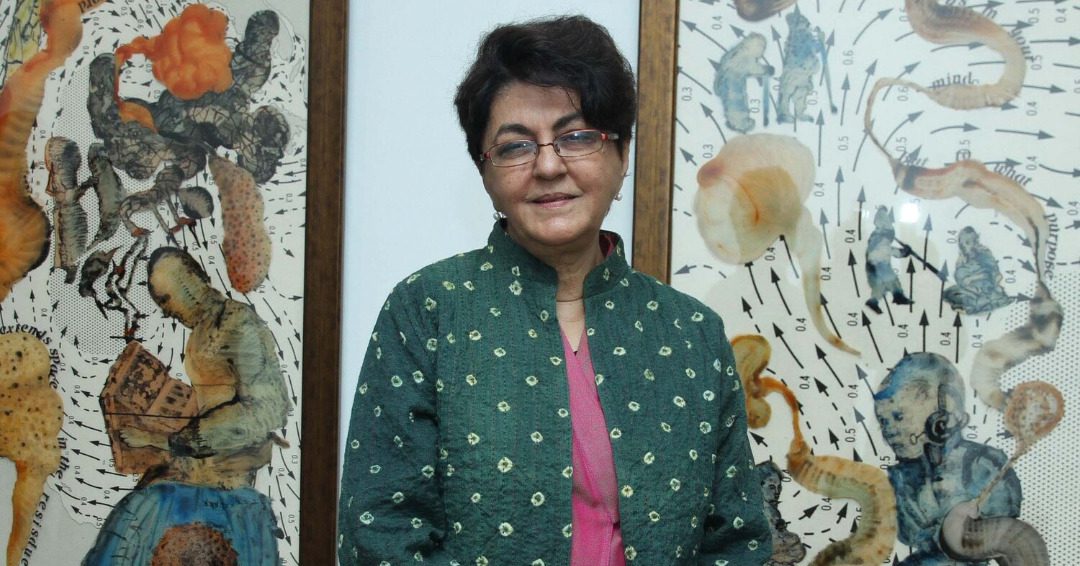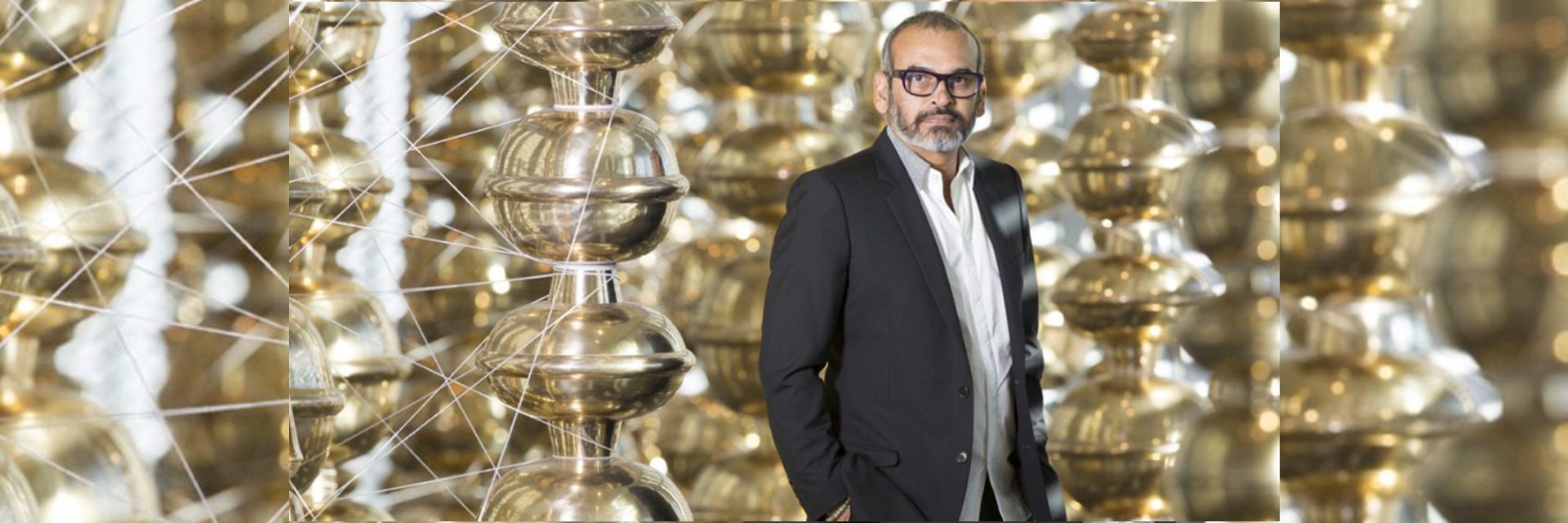(November 2, 2021) She can be easily called the pioneer of Multimedia Art in India. At a time when Indian painters were still painting the traditional way, Nalini Malani was busy experimenting with mixed media. Her art isn’t just visual but is an orchestra for all the five senses. Her work in the last few decades has been a comment on feminism, a subject closer to her heart. Her artwork has been giving voice to the women who have been silenced over generations, and this has earned her the Arts & Culture Fukuoka Prize, making her the first Asian woman to achieve the feat.
The 75-year-old artist, who studied in the Paris, has carved a niche for herself in the art world. Here’s the story of this Global Indian who is making women’s voices heard through her art.
The beginning – Mumbai to Paris
Malani’s journey began a year before India attained independence, and her family sought refuge in Kolkata during the Partition before relocating to Mumbai in 1958. During her formative years, the conflict of displacement and refuge played a crucial role in her life, and soon she began expressing herself through art. Her idea of creative liberation took her to the JJ School of Art where she obtained a diploma in Fine Arts. During her art school days, she had a studio at the Bhulabhai Memorial Institute, which was a multidisciplinary centre inviting artists, musicians and theater actors to work individually and as a community. This experience gave a young Malani the perfect exposure and became a stepping stone for her participation in the Vision Exchange Workshop (VIEW), an initiative by veteran artist Akbar Padamsee. With art still being a male-dominated craft, she was the only female member at the workshop. It was here that she developed a penchant for photography and film, and explored the themes of the turbulent political and social scenario of India during those times.
In 1970, Malani moved to Paris on a scholarship awarded by the French government to study fine arts. In Paris, Malani found the freedom to design her own education since the Ecole des Beaux-Arts was yet to reconfigure its new syllabus. Those two years in the capital of France, Malani practiced printmaking at Atelier Friedlander and immersed herself in Marxist politics while attending lectures by Naom Chomsky, Simone de Beauvoir and attending film screenings at the Cinematheque Francaise where she met Jean-Luc Godard and Chris Marker. Paris gave her the foundation she needed as an artist before she returned to India in 1973.

An artwork by Nalini Malani
The feminist artist
Upon her return, she moved to the bustling market of Lohar Chawl in Mumbai where her work reflected the lives of middle-class Indian families. She began working with paintings – acrylic on canvas and watercolour on paper, and produced art that portrayed contemporary India. Though Paris gave her the freedom to explore art, she was disappointed with the lack of acknowledgement that women artists had to face back home in the 70s. She resolved to bring them together for a group show after a meeting with visual artist Nancy Spero and American feminist artist May Stevens at the AIR Gallery in New York in 1979. Seeing the gallery’s fierce determination to create a space for the work of female artists, Malani returned to India with idea of extending the formula. After years of negotiation with public and private institutions, she curated the first exhibition of Indian female artists titled Through The Looking Glass. It toured for three years, between 1986 and1989, to non-commercial venues as Malani was keen to take art beyond the elitist atmosphere of the art gallery.
Malani has always been vocal about feminism and she made every attempt to make women visible outside the narratives of femininity through her work. She often gave voice to women who have been silenced by works of literature like Sita from Ramayana and Cassandra and Medea from Greek mythology. “Understanding the world from a feminist perspective is an essential device for a more hopeful future, if we want to achieve something like human progress, she said at Centre Pompiduo in 2018.
View this post on Instagram
Pioneer in Multimedia Art
Over the next few years, her art was exhibited in India and abroad. She has been one of the earliest artists to experiment with mixed media and move away from traditional media. “A major turning point in my relationship to written sources in my work came in 1979 when I met the artist RB Kitaj at one of his exhibitions in New York. There I saw an artwork titled If Not, Not, taken from TS Eliot’s The Wasteland. Kitaj said to me: ‘Some texts have artworks in them.’ Since then, the inclusion of literary or philosophical excerpts has remained a constant in my practice,” she told Studio International in an interview.
It was in the 90s that her work began to drastically incorporate medium other than the canvas after the Babri Masjid demolition as it triggered a shift in her art. The renewed religious conflicts that brought back the memories of the Partition for her pushed her artistic endeavours past the boundaries of the surface and into the space. Her foray into the performing art and keen interest in literature brought new dimensions to her art. This even led her to create a new form of art, the video-play that would allow her theatre plays to travel.
Known as one of the pioneers of Multimedia Art, Malani found her work exhibited across the globe from New Zealand to Switzerland to Mauritius to USA. In 2013, she added another feather to her cap when she became the first Asian woman to receive the Arts & Culture Fukuoka Prize for her consistent focus on contemporary themes like war, oppression of women and environmental destruction.
Malani, who began her journey in the art scene in the 60s, has come a long way and has become a name to reckon with in the international art circle.


